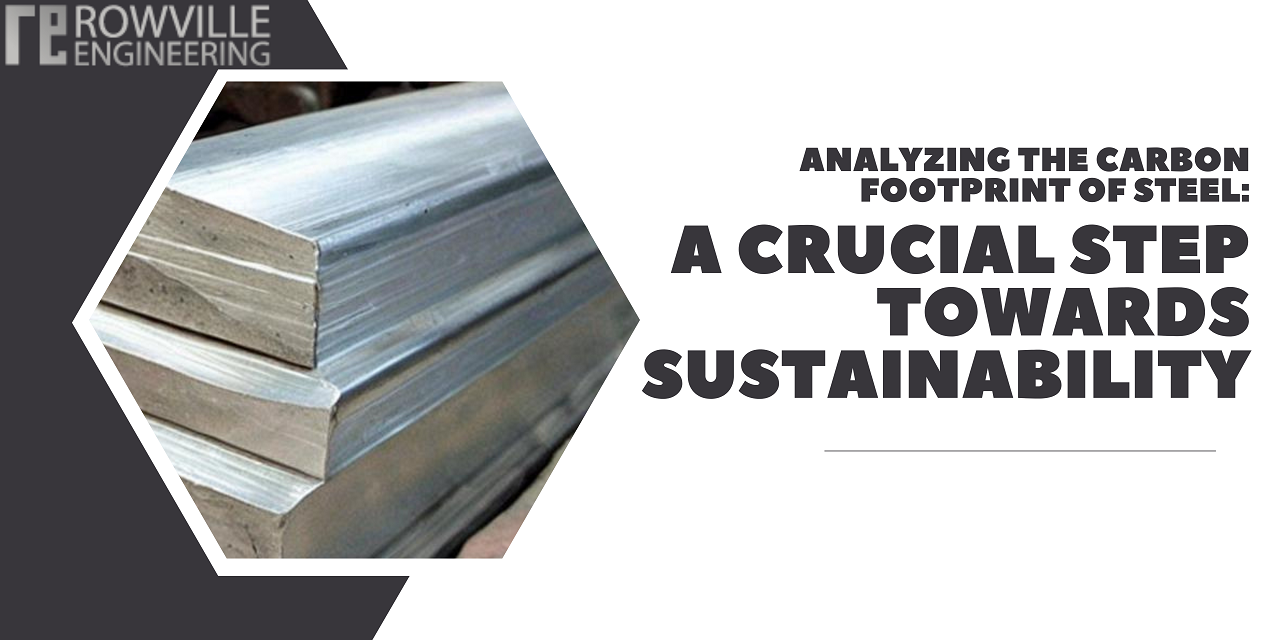Analyzing the Carbon Footprint of Steel: A Crucial Step Towards Sustainability
Industries are increasingly scrutinising their environmental impact as the world grapples with the urgent need to combat climate change. One such industry that has come under the spotlight is steel production. Steel, a critical material in construction, manufacturing, and infrastructure development, plays a significant role in global economic growth. However, its production processes have traditionally been associated with high carbon emissions. In this blog, we delve into the carbon footprint of steel, and its environmental implications, and explore sustainable solutions to mitigate its impact.
Published On:06-07-2023

Understanding the Carbon Footprint of Steel
The carbon footprint of steel refers to the total amount of greenhouse gas (GHG) emissions released during the entire life cycle of steel production. This life cycle includes raw material extraction, processing, manufacturing, transportation, and the end-of-life stage. The primary sources of carbon emissions in steel production are coal and coke used for fuel and the chemical reactions involved in iron ore reduction.
Environmental Implications
Climate Change: Steel production is a major contributor to global carbon dioxide (CO2) emissions. According to the World Steel Association, the industry is responsible for approximately 7% of total global CO2 emissions. These emissions contribute to the greenhouse effect, leading to climate change and its associated consequences.
Air Pollution: Steel production involves the combustion of fossil fuels, leading to the release of air pollutants such as sulfur dioxide (SO2), nitrogen oxides (NOx), and particulate matter. These pollutants have adverse effects on air quality, human health, and ecosystems in the vicinity of steel plants.
Resource Depletion: The extraction of raw materials for steel production, particularly iron ore and coal, contributes to the depletion of natural resources. Additionally, steel production consumes vast amounts of water and energy, further exacerbating the strain on these resources.
Mitigating the Carbon Footprint
Energy Efficiency: Improving energy efficiency in steel plants can significantly reduce carbon emissions. Employing advanced technologies such as energy recovery systems, cogeneration, and waste heat utilization can enhance the overall efficiency of steel production processes.
Alternative Energy Sources: Transitioning from fossil fuels to renewable energy sources can substantially mitigate carbon emissions in steel production. Incorporating solar, wind, or hydroelectric power can offer sustainable alternatives for meeting the industry's energy demands.
Carbon Capture and Storage (CCS): Implementing CCS technologies in steel plants can capture and store carbon emissions, preventing them from entering the atmosphere. By isolating and sequestering CO2 underground or utilizing it for industrial purposes, CCS provides a viable solution for reducing the carbon footprint of steel.
Circular Economy Approach: Embracing a circular economy model can help minimize the environmental impact of steel production. This involves recycling and reusing steel products at the end of their life cycle, reducing the need for virgin materials and decreasing carbon emissions associated with extraction and manufacturing.
Conclusion
Addressing the carbon footprint of steel is a critical step in achieving a sustainable future. By acknowledging the environmental implications of steel production, stakeholders can drive innovation and adopt cleaner technologies. The implementation of energy-efficient practices, renewable energy sources, carbon capture and storage, and circular economy principles can significantly reduce the carbon emissions of steel. Only through collective efforts, collaboration, and ongoing commitment can the steel industry forge a path toward a low-carbon future, ensuring a greener planet for generations to come.